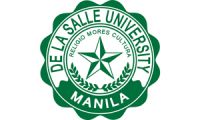
A De La Salle University-led project conducts a geotechnical mapping of Metro Manila subsoil to help the construction industry determine the most suitable foundation type and soil improvements.
Civil Engineering Professor Dr. Jonathan Dungca, who concurrently serves as DLSU vice president for Laguna Campus and dean of the School of Innovation and Sustainability, is currently working on a project that aims to help members of the construction sector in building a strong foundation for their projects.
Called Geotechnical Mapping of Metro Manila Subsoil (GEMMMS), the project is a 3D map of Metro Manila’s subsoil. With funding from the Department of Science and Technology under its Grants-in-Aid (GIA) Program, Dungca serves as the project lead, with DLSU’s geotechnical engineering professors from the Department of Civil Engineering as his co-proponents, namely, Dr. Mary Ann Adajar, Dr. Erica Elice Uy, Dr. Irene Olivia Ubay-Anongphouth, Dr. Joenel Galupino, and Engr. Miller Cutora.
“The Philippine construction industry is expected to surge in 2024, fueled by government investments and increased bank loans. To ensure the safety and stability of new structures, reliable data about the ground beneath them is crucial. This data helps determine the most suitable foundation type and any necessary soil improvements to prevent future hazards,” Dungca says.
Currently, information about Metro Manila’s subsoil is scattered across various agencies. This makes it difficult to get a clear picture of the ground conditions across the entire region.
GEMMMS project aims to address this challenge. It will create a centralized, digital map containing information on the geological and geotechnical properties of Metro Manila’s subsoil.
According to Dungca, GEMMMS leverages the power of 3D GeoVisionary software. This software will transform the borehole data provided by partner agencies like the Department of Public Works and Highways (DPWH) and the Philippine Institute of Volcanology and Seismology (PHIVOLCS) into a 3D map.
Dungca says this 3D map will serve as a valuable reference for geotechnical surveyors, allowing them to pinpoint areas for investigation, determine optimal borehole depths, and choose the most effective sampling methods. This translates “faster and more cost-effective site assessments.”
Currently, GEMMMS focuses solely on Metro Manila. The researchers will analyze Standard Penetration Test (SPT) data to create a digital map encompassing groundwater elevation, soil classification, and SPT N-values.
Dungca shares that while GEMMMS lays the groundwork for a comprehensive understanding of Metro Manila’s subsoil, it excludes factors like liquefaction-induced subsidence for this initial phase. This is something that can be considered in future research.
To ensure project feasibility, GEMMMS utilizes data from existing borehole logs compiled by government agencies and experts. Collecting direct borehole data across the entire region would be a significant undertaking.
The project follows a four-step workflow: data collection, which refers to gathering borehole data from partner agencies; data cleansing, which means ensuring data accuracy and consistency; delineation, or creating the 3D map using 3D GeoVisionary software; and validation, which is verifying the accuracy of the final 3D map.
“This project will empower geotechnical professionals with a powerful tool, ultimately contributing to safer and more sustainable construction practices in Metro Manila,” Dungca stresses.
Contact: Dr. Jonathan Dungca | jonathan.dungca@dlsu.edu.ph
















